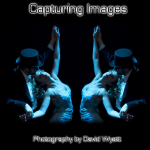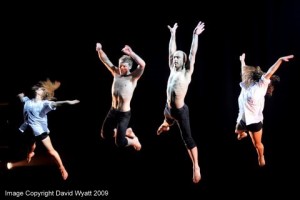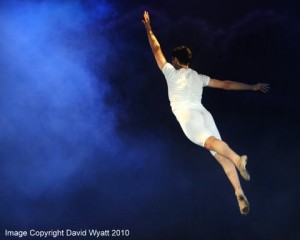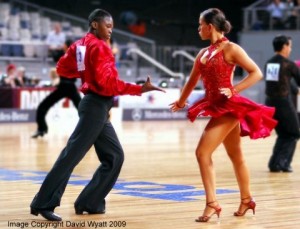
Low-light photography is something that often confuses the metric bejesus out of photographers: It’s very tricky to get right, and even if you do everything 100% correctly, often-time you’ll find that your photos still don’t come out as you dreamed of. Now, multiply that with the trickyness of photographing action, and you’ve got yourself a true cluster-copulation of Whiskey Tango Foxtrot.
Everybody will sooner or later end up in a situation where you’re photographing moving things in the dark. To concert, event and dance photographers, it’s part and parcel of their chosen photography work.
I’ll be honest: I don’t consider myself a very good low-light photographer (with the exception, perhaps, of my concert photography portfolio, but in those circumstances you’ve got an entirely different set of challenges.
Today, though, I’ve got a wicked treat for yourselves: One of my colleagues and friends in Australia, David Wyatt, agreed to share some of his observations of low-light action photography with us. He’s a scholar, a gentleman, a legend, and a bloody great photographer… Take it away, David!
Dance and stage photography are two areas of photography that often intertwine with each other. They can be wonderful to watch: They’re full of dramatic moments that can include moving silhouetted outlines of dancers or actors performing while being back-lit by a single strobe light – which is a great effect from the viewpoint of the audience, but which can make life for you, the photographer, incredibly frustrating!
The following notes are simply intended as a guide only to ways of coping with low light photography, particularly for photographers just starting out in or thinking about trying dance or stage photography – practice is the only effective way to develop experience and increase your photography skills, and there are thousands of great sources out there providing methods of increasing your photography knowledge, depending on the area of photography that you enjoy.
Equipment
My camera bag looks a bit like this: I use a Nikon D700 with a 70-200mm and a 17-55mm f2.8 Nikon lenses, and have recently upgraded from a Nikon D300. I also sometimes use an SB-800 flash unit for posed shots, and never use flash during dance or stage performances, unless I’ve previously received permission from the event or performance directors to do so.
I started taking photographs of dance and stage performances eighteen months ago, and love it. There’s nothing like capturing a shot of a dramatic moment on stage, or of a passionate glance between a couple dancing together, and knowing that the same moment captured within your camera will never occur ever again in precisely that same way.
The lighting challenge
Dance and stage performances can often have scenes or components which are entirely under-lit or which have fluctuating lighting levels, and sometimes fast movement at the same time, which together can make it very difficult to balance between a shutter speed that will be slow enough to let sufficient light into the camera to illuminate the image, while using a shutter speed that will be fast enough to freeze the movement. On the other hand, slower shutter speeds can also be used to amazing artistic effect with tripods or monopods through blurring the movement of dancers to give an impression of high speed in the photograph. (If you’re confused about exposure, check out How Exposure Works).
One of the main aspects of low-light dance photography in particular is that having faster glass will always makes a large difference in the kinds of shots that can be achieved. With an f3.5-5.6 lens, you can try to compromise in low-lit venues by lowering the shutter speed and opening the aperture as widely as possible using manual control settings on the camera, but chances are that those setting may still not be enough to freeze motion without using flash if the action is fast-moving, particularly if you may be wishing to capture the background as well as nearby action through using a smaller aperture for greater depth of focus (i.e., f5.6 – f11).

It's difficult to get too much energy into a dance shot - but you can try, if you want! © David Wyatt
Increasing the ISO levels can help with taking shots at a fast enough shutter speed to try to freeze the motion, though depending on the kind of camera you use, grain in the images at higher ISO levels can tend to become a problem, especially between ISO 1600 to 3200. While the f2.8 lenses more suited to low-light work are quite expensive, some of the f1.8 prime lenses are much more affordable and fantastic quality lenses for low-light performances, especially for photographers on a budget. The downside with prime lenses is that they require footwork to move around to frame the image properly, and without footwork or mobility, can require extensive post-shoot cropping for composition requirements, which is the compromise that offsets the price of the f2.8 lenses with zoom capabilities.
There will always be a dance or stage performance in low-light where you may not be able to capture the action effectively purely because of the low lighting that may be involved, or because of the distance placed between yourself and the dancers/performers. If that happens, it may simply be a matter of needing to upgrade your equipment if that’s an option, trying to use a slower shutter speed with a tripod or monopod (shooting at 1/40 and 1/60 shutter speeds with a monopod can still capture stationary non-moving images very well, when there may be a pause in the action), or checking if you can use flash at those events, which may sometimes also be an option.
There is also some excellent free software out there for image editing (including brightness and light levels adjustment) and for noise reduction in images, including GIMP, Picasa, and Neat Image. Neat Image is a nifty piece of software great for reducing noise/grain in images that may have been taken using a high ISO, though using noise reduction can substantially decrease the quality of images it has been applied to. Images with a large amount of noise reduction applied may still be fine for website display at small-medium size, though trying to print those same images may be a different story entirely due to the loss of detail through the noise reduction process. The new Lightroom 3 has some pretty awesome noise reduction algorithms built in, as well – so if you’re using LR, don’t forget to give that a shot, too!
What I’ve written here is a snippet of my own experience of low-light photography through dance and stage work, and I’m still continually learning as I go along. I base my abilities to a higher degree on the quality of the photographs that I’m yet to take at future performances, and to a lesser degree on my previous work. A bit like the acting adage that actors are only ever as good as their next performance.
Dance and stage photography in low-light environments are both some of the most difficult kinds of photography to capture effectively, although both forms also have some of the most beautiful and dramatic human moments that can be captured on film, which make the hard work infinitely worth it!
About the author
David Wyatt is a dance and stage photographer based in Melbourne, Australia, with a wicked eye for a good photo. Check out his website over on Capturing Images.
He loves a bit of feedback, and is available for assignments – contact details are on his site, so knock yourself out!
Do you enjoy a smattering of random photography links? Well, squire, I welcome thee to join me on Twitter - Follow @Photocritic
© Kamps Consulting Ltd. This article is licenced for use on Pixiq only. Please do not reproduce wholly or in part without a license. More info.







